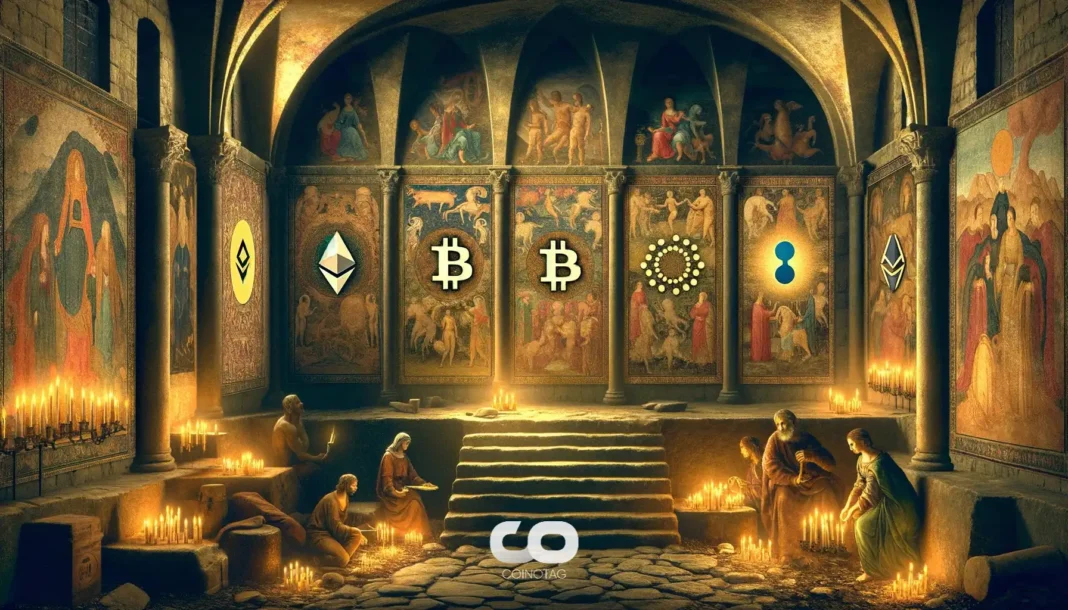-
Recent geopolitical tensions have sharply divided investor sentiment between traditional safe havens like gold and risk assets such as Bitcoin, revealing contrasting behaviors amid market instability.
-
While gold surged over 2% following Israeli airstrikes on Iranian nuclear sites, Bitcoin and other cryptocurrencies experienced significant sell-offs, underscoring their alignment with risk-on assets rather than safe havens.
-
Stephen Wundke of Algoz highlighted to COINOTAG that gold attracts risk-averse investors during conflicts, whereas Bitcoin’s decline predates the Middle East escalation, reflecting broader market consolidation trends.
Geopolitical unrest triggers gold’s safe-haven rally while Bitcoin falls, highlighting crypto’s risk-asset nature amid market uncertainty and investor flight to safety.
Gold’s Safe-Haven Surge Contrasts Bitcoin’s Risk-Asset Decline Amid Middle East Conflict
The recent Israeli airstrikes on Iranian nuclear facilities have intensified geopolitical risks, prompting a classic flight to safety in global markets. Gold, traditionally viewed as a reliable safe haven, responded with a notable price increase, climbing over 2% on the day to reach $3,427.90 per ounce. This surge reflects investor preference for assets perceived as stable during periods of uncertainty. In contrast, Bitcoin, often dubbed “digital gold,” diverged sharply by plunging 3.6% to $103,900, illustrating its current role as a risk asset rather than a protective store of value.
Data from CoinGecko and Trading Economics reinforce this divergence, with gold up 7% over the past month and more than 46% year-to-date, while Bitcoin’s price decline coincided with the onset of the conflict. This behavior suggests that, despite its reputation, Bitcoin’s market dynamics remain closely tied to broader risk sentiment and equity markets rather than geopolitical safe-haven demand.
Investor Sentiment and Market Dynamics: Crypto vs. Traditional Safe Havens
Analysts emphasize that Bitcoin’s price movements are influenced more by market fundamentals and investor risk appetite than by geopolitical events alone. Stephen Wundke, director of strategy at Algoz, noted that Bitcoin’s decline began prior to the Middle East tensions, attributing it to a typical June consolidation phase rather than immediate conflict-driven selling. Meanwhile, gold buyers are characterized as risk-off investors who retreat to precious metals during crises, a behavior not mirrored by crypto investors at this time.
Jay Jo, senior research analyst at Tiger Research, further explained that Bitcoin often correlates with technology stocks rather than gold, which explains the opposing price trends during geopolitical turmoil. This coupling with tech equities positions Bitcoin as a risk asset vulnerable to market volatility, contrasting with gold’s defensive appeal.
Altcoin Liquidations and Flight to Safety in Traditional Assets
The ripple effects of the geopolitical unrest extended beyond Bitcoin, with altcoins such as Ethereum, XRP, and Solana experiencing over $1 billion in liquidations, predominantly from long positions. This mass liquidation underscores heightened risk aversion among crypto traders amid uncertain global conditions.
Concurrently, traditional safe havens including the U.S. dollar and government bonds attracted increased investment flows, reflecting a broader market rotation away from risk assets. This dynamic highlights the bifurcation in investor behavior, where conventional assets benefit from crisis-driven demand while digital assets face selling pressure.
Future Outlook: Potential Impact of Escalation on Crypto Markets
While current market reactions suggest Bitcoin and altcoins are primarily influenced by internal factors and seasonal trends, experts caution that any significant escalation in the Middle East could exacerbate crypto market volatility. Wundke warned that intensified conflict might push Bitcoin below the psychologically important $100,000 threshold, signaling a deeper risk-off sentiment among investors.
The Crypto Fear and Greed Index, currently at 61 but declining by 10 points, alongside predictive models from Myriad indicating sustained subdued sentiment, further illustrate the cautious stance prevailing in crypto markets. Investors are advised to monitor geopolitical developments closely, as these will likely continue shaping risk appetite and asset allocation decisions in the near term.
Conclusion
The recent geopolitical crisis has reaffirmed gold’s status as a safe haven, attracting risk-averse capital amid uncertainty, while Bitcoin and other cryptocurrencies have behaved as risk assets, experiencing notable declines. This divergence underscores the evolving role of crypto in global markets and highlights the importance of distinguishing between asset classes during periods of instability. Moving forward, investors should remain vigilant to geopolitical developments and market signals, balancing risk exposure with strategic asset diversification to navigate ongoing volatility effectively.







